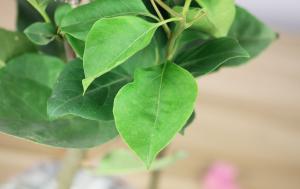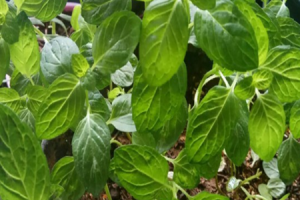How to Get Potted Plant Stains Off
Potted plants add beauty and color to our homes, but they can also leave stubborn stains behind. Water and soil can create an unsightly mess on floors, carpets, and furniture. If not dealt with properly, these stains can become permanent. Luckily, there are several effective methods to remove potted plant stains and restore your surfaces to their former glory.
Method 1: Blotting and Absorption
The first step in removing potted plant stains is to blot up any excess moisture with a clean and absorbent cloth or paper towels. Avoid rubbing as it may spread the dirt and make the stain larger. Once you have blotted up as much as possible, sprinkle baking soda or cornstarch over the stain and leave it overnight. The powder will absorb remaining moisture plus any odor that may be left after the stain is removed. In the morning, vacuum up the powder and check the stain before proceeding.
Method 2: Vinegar Solution
If the stain still persists, mix a solution of equal parts white vinegar and water in a spray bottle. Spray it on the stain and let it sit for a few minutes, then blot it up with a clean cloth or paper towel. The vinegar solution can help remove the stain along with the dirt, grime, and odors that may have accumulated. After you are done, rinse the area thoroughly with clean water or wipe it down with a damp cloth to prevent any lingering vinegar smell.
Method 3: Salt and Lemon Juice
If you prefer a natural solution, mix 3 parts salt to 1 part lemon juice to create an all-natural scrub. Spread the mixture over the stain and scrub gently with a clean cloth or brush. Salt is abrasive and will scrub away any grime or dirt, while lemon juice is acidic and will help lift the stain. Rinse with clean water and blot away any excess moisture before drying the area with a clean towel or cloth.
Method 4: Enzyme Cleaner
If all else fails, use an enzyme cleaner specifically designed for pet stains. These cleaners can break down organic matter and eliminate the smell entirely. Apply the cleaner to the stain and let it sit for a few minutes, following the instructions on the label. Blot up any remaining moisture and residue with a clean cloth or paper towel. You may need to repeat this process a few times for stubborn stains or those that have set in for a long time.
Preventing Potted Plant Stains
Prevention is always better than cure. To avoid potted plant stains in the first place, use saucers or drip trays to catch excess moisture and prevent it from spreading. If you're repotting a plant, use a quality potting mix that includes perlite, vermiculite, and peat moss. These ingredients provide excellent drainage and will help prevent water from pooling in the pot.
By following these tips, you can easily remove potted plant stains and prevent them from reappearing in the future. Remember to always test your cleaning method on a small, inconspicuous area first, and be patient. With a little elbow grease, your surfaces will look as good as new in no time.

 how many times do yo...
how many times do yo... how many planted tre...
how many planted tre... how many pine trees ...
how many pine trees ... how many pecan trees...
how many pecan trees... how many plants comp...
how many plants comp... how many plants can ...
how many plants can ... how many plants and ...
how many plants and ... how many pepper plan...
how many pepper plan...































